- Home
- Matthew Condon
The Night Dragon Page 4
The Night Dragon Read online
Page 4
Knife Boy
By the time he was a teenager, John Andrew Stuart had already developed a reputation on the streets of Brisbane as a a violent thug with a hair-trigger temper. Born on 15 September 1940, Stuart was the fifth child to an aggressive father, David James Cochrane Stuart,and mother, Edna Ruby Stuart. Having left school at 13, it was only a matter of time before he brought himself to the attention of police for his violent outbursts. In the summer of 1956 Stuart was in a hamburger shop in Brisbane’s Fortitude Valley when he committed a crime that would define the rest of his life.
The Argus briefly reported:
Police today charged a 15-year-old boy with attempting to kill following a stabbing in the Valley last night. Another Youth, Kenneth Wallace Steen, 19, is dangerously ill in Brisbane Hospital with stab wounds in his stomach and wrist.
During the investigation, police found the weapon, a three-bladed pocketknife, hidden in Stuart’s flat. The court ordered his mother to guarantee her son’s good behaviour until he turned 18. (By this stage she was raising her children alone, having separated from her violent husband.) Stuart was warned if he didn’t keep his nose clean he’d be sent to the Westbrook Farm Home for Boys.
It only took three short months for Stuart to find himself back in trouble for stealing a car. As promised, he was sent to Westbrook for two years and two months. It was an experience that left a lasting impression on him, as it did many other inmates.
The superintendent in charge of Westbrook during the 1950s was the feared sadist Roy Golledge. While the institution’s virtue was praised both in the press and State Parliament for decades, it was in reality a place of horror and brutality. Rather than preparing troubled boys as model citizens, it created generations of criminals who would go on to wreak their havoc in adulthood.
Mark Greenhalgh was a contemporary of Stuart’s at Westbrook. He wrote of his experiences in a submission to a Senate committee in 2008: ‘Most of the warders used sadistic methods to control and punish us, but the worst of them all was the Superintendent, Mr Roy Golledge. This man seemed to take great pleasure in humiliating us publicly, flogging us with his heavy leather belt while we knelt naked at his feet. You could receive anything up to 60 lashes and you always ended up bleeding profusely. Sometimes boys lost consciousness. They were the lucky ones.’
At the Farm Stuart befriended a host of boys who would later join him in his adult criminal career. One of those friends was Billy Stokes, who would also serve two terms at Westbrook. He also crossed paths with the young Tommy ‘Clockwork Orange’ Hamilton from Chermside. By all accounts, Westbrook was primary school to Boggo Road’s secondary school. At Westbrook, the boys were introduced to the horrors of incarceration that would prepare them for adult prison.
Another young inmate, who had been incarcerated at Westbrook as an ‘uncontrollable child’, remembers Stuart and Stokes on the farm. ‘Just looking into his [Stuart’s] eyes was like staring at chunks of ice,’ he recalls. ‘His eyes were dead. There was no reflection. I used to shudder when I had to look at him … There was a large water tank outside in the yard and it was a lovely shady spot during the summer time,’ he says. ‘Stuart took that on as his domain, along with four or five other blokes. No one went near there unless you wanted trouble.
‘Stuart’s mother used to come up every couple of months in a Ford Single Spinner. She brought a girl for Stuart. There was a little park across the road from the complex and they’d meet out there.’
As for Stokes, he was a pretty tough cookie. ‘I saw him get the strap once and he wouldn’t say a word. If you howled, Golledge would stop. He and Stuart were tough. They could take it. Stuart got some awful floggings from Golledge, but it didn’t seem to bother him.’
The inmate also steered clear of the rampant sexual abuse in Westbrook. ‘The food was virtually inedible but you knew that if you gave the boys who worked in the kitchen some sexual favours, they’d slip you a proper feed,’ he says. ‘I know for a fact that Stuart had some boyfriends, or “girlfriends”, or whatever you’d like to call them, at Westbrook.’
The inmate recalls another boy who Stuart befriended during that time. John Bell would later go on to become a bouncer at many of the popular entertainment venues around town. ‘Bell was a fitness fanatic,’ the inmate recalls. ‘He was forever doing push-ups and jumps.’
Bell’s daughter, Kathy, says after her father was released from Westbrook he joined a motorcycle gang. ‘My dad was the leader of the group. It was called The Tarantulas,’ she says. ‘And they all had motorbikes and they all used to go down to the park and beat up the poofters and all that sort of stuff. John Stuart was in the gang but Mum always said that he was like bipolar, even back then. He’d go in and out of gaol, he’d get into trouble, and she was the one that first said to him, “Just tell them you’re crazy and they’ll let you go, or they’ll put you in the nut house for a little while and then you’ll get out.” And so, that’s what he did. Every time he’d get into trouble he’d just say he was crazy and then they’d let him out again.’
Stuart and Bell were both out of the institution by the spring of 1958. Back on the streets of Brisbane, the competition was on to prove who could be the toughest bodgie in town. However, unlike Stuart, the young Bell understood the importance of a proper job.
‘He was an apprentice butcher,’ Kathy Bell recalls. ‘He wanted extra money because he had the two children. And so, that’s when he first went to go to work for John Hannay in West End. They’d all hang around at the Crystal Palace [theatre] at Windsor. And John Hannay had a few clubs, or he was affiliated with clubs back then …’
She recalls that everyone in that milieu was doing dodgy deals. ‘Right up until I got married my dad would go down to the Wharfies Club every Friday where they would sell stuff for, you know, ridiculous amounts of money, you know, cheap stuff,’ she says. ‘We’d always get our Christmas presents from there and stuff that was stolen from Myers or wherever else, and Johnny Morris used to run the club down at the Wharfies Club … they were all best friends, all of them … Johnny Hannay and Johnny Stuart.’
According to Plunkett, Stuart’s informal clubhouse, of sorts, was the Hub milk bar across the road from the Dawn Theatre on Gympie Road, Chermside. It was at the Hub that Stuart would mingle with the Clockwork Orange Gang. And it was through associations with this gang that Stuart would later meet the formidable criminal Vincent O’Dempsey.
A Disappearance
By early 1964 O’Dempsey, now in his mid-twenties, was finally out of gaol for assaulting Sergeant Francis Toohill. He immediately took a job working on the construction of the Leslie Dam in Warwick. There was work to be had there for fit young men, and word got around as far away as Brisbane that if you needed to earn a quick quid, the Leslie Dam site was the place to be.
One criminal, who would later become an associate of O’Dempsey, drifted up to Warwick with some mates and headed to the dam site ‘for a change of scene’. But when he saw the workers’ dongers and experienced ‘the bloody flies all over your face all the time’, he swiftly high-tailed it back to Brisbane.
As for O’Dempsey, securing a legitimate job straight after incarceration would fit a pattern he’d use time and again in the future. Invariably, a brief sojourn as a ‘square head’ would then see him slide back into the underworld and darker pastimes.
At the Leslie Dam, O’Dempsey befriended a co-worker named Raymond Vincent ‘Tommy’ Allen. The 22-year-old Allen then assisted O’Dempsey in the burglarly and arson of the Pigott & Co. jewellery store in Warwick. They also stole the store safe.
Retired detective Alan Marshall remembered clearly the Tommy Allen investigation. ‘We dug deeper with Allen and we found out that O’Dempsey used to drive Tommy back to Fortitude Valley in Brisbane where Tommy saw his mother, and used to spend the weekend there,’ Marshall said.
In 1964, investigating officers made a breakthrough on the P
igott & Co. case when they stopped one of O’Dempsey’s associates driving his distinctive cream and cherry 1957 Holden. Marshall said: ‘The police came along and got this German fellow who was driving the car and they matched up the paintwork from the safe that was stolen out of the jeweller’s, and it matched the paint in the back of the car.
‘Then they found other things like a hacksaw blade … with a hacksaw blade, they’re nicely painted, and when you use them the paint comes off. And the amount of paint that was missing was from the leading edge of the hacksaw blade, just happened to be the distance going backwards and forwards through the bars at the back of Pigott’s. So they had a fairly substantial case.’
The German decided to leave town and drove O’Dempsey’s car to Sydney. ‘He left the car at number one wharf and pissed off overseas,’ said Marshall. Before the German left he called O’Dempsey and told him where he’d left the car. So Vince and Tommy Allen hitchhiked by truck down to Sydney to pick it up. As Marshall recalled: ‘While they were searching through the car little Tommy Allen finds a watch and O’Dempsey grabs hold of the watch and says, “Give me that. That come out of the Pigott’s jewellery robbery.” So they jump in the car … they couldn’t find the keys to it [but] they finished up getting the car started and drove back to Warwick.’
The dust settled but it wasn’t long before Tommy Allen was brought in by police on suspicion of sexually assaulting a young woman.
‘And he spilt the beans,’ recalled Marshall. ‘He agreed to give evidence against O’Dempsey. Allen said, “Look, I’ve just been down to Sydney with O’Dempsey. And I found this watch. And he’s posted it back to himself in an [empty] pack of Kool cigarettes”.’
‘Back in those days the Post Office actually worked on the Saturday. The police came around to O’Dempsey’s place after the delivery of the mail to catch O’Dempsey with the stolen watch. And then of course he came back to the police station and during the formal questioning all that O’Dempsey would say [is]: “You’re the detective … that’s for you to fucking well find out.”’
After O’Dempsey was charged over the robbery, local police actually secured Tommy Allen a job with the railways, but his tenure didn’t last long. ‘The police got him that job and he went out to a little place called Karara,’ one investigating detective remembers.
Karara was a little one-horse town on the south-western railway line, 208 kilometres west-south-west of Brisbane and not far from Warwick. It boasted a tiny wooden station and a station master’s house replete with a corrugated-iron water tank. The population of the town was in the low hundreds. ‘Tommy was working there and he was a bit of a lairy sort of bloke,’ the detective says. ‘He had leopard-skin trousers. So you can imagine, leopard-skin trousers … they stood out like the proverbial.’
Tommy Allen’s mother, Ena Clarke, lived in Baxter Street, Fortitude Valley, and her son would often drive from the Darling Downs to see her. A few weeks before her son and O’Dempsey were due to appear in court on the theft charges, Tommy was with his mother when three men in a black car drove up to her house and threatened Tommy. She thought one of them might have been Vince O’Dempsey, but she couldn’t be sure.
The three men got out of the car and picked on Allen, but his mother told them to be fair and fight him one at a time if they had to. Her son was young, strong and a trained boxer. Ena held a broomstick across the doorway in order to let them in one at a time.
The first person through was knocked out by Tommy. The second swung at Tommy, missed, and struck Ena’s husband. He was out cold. The third, who Ena Clarke thought was O’Dempsey, hopped into the black car and drove off. Tom chased the car and managed to grab the steering wheel through the open driver’s window before falling onto the road. The driver then did a U-turn and tried to run Tommy down, missing him by a metre. The car drove off.
A few weeks later, when O’Dempsey appeared before the court on robbery charges, his mate Tommy Allen was nowhere to be seen. It didn’t take long for Vince to work out that Tommy had ratted on him.
Marshall says: ‘O’Dempsey went into court on the Monday. O’Dempsey’s parents were held in high repute there. And the next thing O’Dempsey’s out on bail and young Tommy and Vince are driving around in the car. They go up the main street there near the Post Office and O’Dempsey said to someone, “Oh, I’m just taking young Tommy to Sydney”. Young Tommy’s never been seen since.’
Without Tommy’s evidence, the case against O’Dempsey collapsed.
Marshall recalls: ‘When we checked with the railways there was five pound, ten pence and tuppence uncollected from his wages. That was the last he was ever heard of. That money was never collected and was still held by the railways.’
A missing person report was completed on Raymond Vincent ‘Tommy’ Allen. And that was the end of that.
‘Now, Vincent O’Dempsey was the last one seen with Tommy Allen,’ Marshall says. ‘O’Dempsey was told about Tommy Allen spilling the beans on him, he was fully cognisant of the fact that Tommy had done that, because the police had actually told him during the interview. That was the rock that Tommy Allen perished on.’
The vanishing of Allen was the beginning of a lifelong phenomenon surrounding O’Dempsey – anyone who threatened his liberty simply disappeared without trace.
The Sydney Mob
After his release from prison, in the heady days of the early 1960s, and with Tommy Allen no longer a threat to his freedom, Vincent O’Dempsey made frequent visits to Sydney, where he established some powerful and lasting friendships that reached deep into the underworld. One of those friendships was with the old-time mobster Frederick Charles ‘Paddles’ Anderson. (Anderson supposedly earned his nickname due to possessing a large pair of feet.)
Anderson was deeply embedded in the Sydney and Melbourne underworlds by the 1930s, and his early criminal activity occurred in that twilight zone between the violent golden era of the razor gangs and the likes of Frank Green and Tilly Devine in the 1920s and 30s, and the advent of the modern gangster from the late 1940s through to the 1960s.
Born on 7 February 1915, Anderson attended Fort Street High School in Petersham in Sydney’s inner-south-west. (Other alumni included the crime boss Abe ‘Mr Sin’ Saffron, as well as Governor-General John Kerr, actor Michael Pate, and future New South Wales premier ‘Nifty’ Neville Wran.)
When Paddles Anderson began a life of crime, men were wearing heavy suits and hats. By the time it ended, with his death in the mid-1980s, it was called organised crime, replete with professional hitmen. Anderson gained his notoriety in June 1940 when he was charged with murdering John Charles Abrahams in Collingwood, in a crime described by the then Crown Prosecutor as one that more ‘befitted a city like Chicago than Melbourne’. During his trial Anderson famously alibied himself, by inviting a taxi driver to join him for a meal at the time of the alleged murder. He told the court he and the taxi driver had steak and eggs. When Anderson was found not guilty, he thanked the jury.
One of Anderson’s great talents was to cultivate contacts and friendships in high places. And he knew the importance of getting corrupt coppers onside. Anderson was smart enough to attach himself to one of Sydney’s most ruthless detectives, Ray ‘Gunner’ Kelly, which kept him out of serious strife for the rest of his underworld career.
As Michael Duffy and Nick Hordern reported in their book, Sydney Noir: The Golden Years: ‘The picture of the power structure of organised crime in Sydney … omits Frederick “Paddles” Anderson who … was older than most of the other leading gangsters [in the 1960s].
‘Some observers, including reporter Bob Bottom and crook Karl Bonnette, have suggested Anderson was the most powerful criminal in Sydney for many years, possibly from the 1950s right through to the 1970s.’
‘Not much happened unless it went through Fred … Fred was the man; he was the smartest of all of them,’ Bonnette, a former associate, reportedly said aft
er Anderson’s death. ‘You could go and get advice off him about anything. He had connections everywhere: judges, politicians; he was accepted in a lot of different circles and he had a bit of class. I’d often go to his house for dinner and that’s where I first met Lenny McPherson.’
By the time Paddles Anderson became aware of the talents of Vince O’Dempsey in the mid-1960s, he was, at 50, the reputed titular head of the Sydney crime scene. Anderson, as was his habit, sought out and established connections with other hardened criminals. ‘Vince used to work for a bloke called Paddles Anderson,’ says one of O’Dempsey’s former associates. ‘Now mate, a lot of people talk about Lenny McPherson and George Freeman and all that. But Paddles Anderson was the godfather. He made black people turn white. He had that much power and that much money.’
The associate says Anderson was a big fan of hard men. ‘Paddles loved people tough, you know? He loved tough people – people who could fight, people who could handle themselves and people that keep their mouth shut,’ he says. ‘And you always need someone to do your dirty work for you.’
Others who knew O’Dempsey in this period said he always found work in Sydney as a ‘gunman’.
It was true that in the world of corrupt police and criminals in the 1960s, Queensland and New South Wales had some curious, almost frightening, parallels, with each state boasting notorious characters who eerily mirrored one another. As Duffy and Hordern point out, the criminal circle in Kings Cross was small, ‘both socially and geographically … there was a close connection between the Sydney and Brisbane underworld, far more so than between Sydney and Melbourne, with criminals and police moving seamlessly between the two cities.’

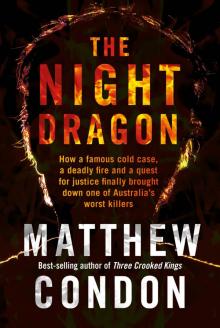 The Night Dragon
The Night Dragon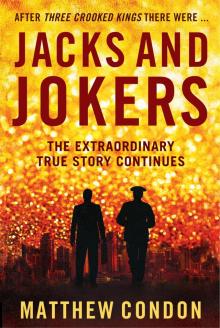 Jacks and Jokers
Jacks and Jokers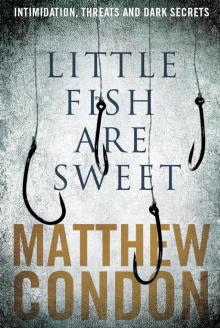 Little Fish Are Sweet
Little Fish Are Sweet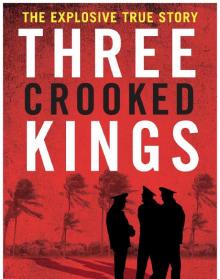 Three Crooked Kings
Three Crooked Kings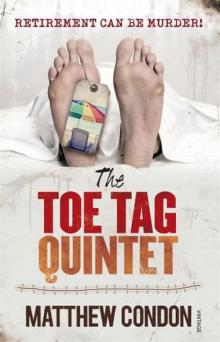 The Toe Tag Quintet
The Toe Tag Quintet